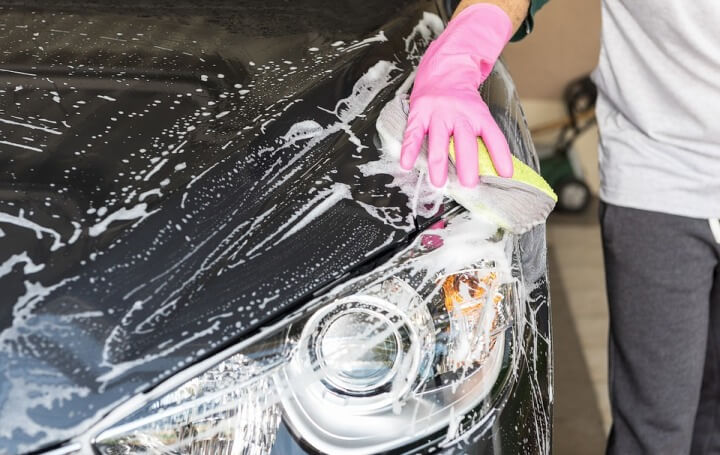Difficult spots in the car: How to remove the resin, pigeon droppings
It is a real pity that we do not live in a television commercial. Of those in which the dirt go with a single pass of cloth, the protagonist opens his eyes astonished and a family of catalog gather at the table to celebrate with a copious meal that the spots have disappeared forever from their lives.
But not all is so easy. If you usually wash your car often you surely know it well. The resin of the trees, the mud, the pigeon droppings… Long lists of difficult spots that can make us fear for the integrity of our painting when cleaning. To avoid problems, here is a series of tips that can help you in this difficult task.
Resin
Park under the trees so that its shadow protects our car from an intense sun can end up with the same full of resin. To eliminate it, you need a cloth or a microfiber cloth. First, moisten the entire car by applying your usual cleaning product with the aforementioned cloth. Next, moisten even more the area with larger spots and includes a few drops of a specific product to the cloth and let it act a couple of minutes. Next, carefully clean the desired area and, once the stain has been removed, wash the entire car again with soap and water like any other day.
Pigeon droppings
Another of the serious problems with which you can find the painting of our car is the bird droppings, being the pigeons, the sparrows and the swallows the main “protagonist”. The droppings of birds often contain acids that if neglected can end up damaging the body of the vehicle and end up leaving important spots in the future. To avoid this, be very careful when removing them.
The ideal would be to address this problem as soon as possible. If it has not been half an hour since the pigeon or another bird has done the task, moisten the area and leave a damp cloth on the surface for ten minutes. Once this time has passed, remove the cloth gently and the excrement should have gone completely.
However, at other times it takes a long time until we are aware of how stained our car is, either because we have gone on vacation or because we do not use it often. In this case it is best to moisten the area well and gently rub a sponge, which is not too aggressive, impregnated with shampoo for vehicles. If this does not work, it is best to resort to specific products.
Mud
When our problem comes from the sky but it has nothing to do with the birds, we usually talk about mud storms. This phenomenon usually occurs in the recently released spring and, above all, in summer, when the rain falls from the sky dragging the dust in suspension and it seems that our car has been, literally, showered with mud.
To eliminate these spots without leaving dust in the car, it is best to moisten well, with water or with very diluted soap, the vehicle before getting to work. Next, start cleaning the car by the wheels with a brush and continue through the body and glass with a microfiber cloth. Finally, apply wax or rain repellent and finish cleaning with a cloth to dry and collect the last traces of rain. During the process, it is good to change the water regularly so as not to pick up dirt from the bottom of the bucket.
Tar
First, get yourself a cheap gel to remove oil stains and apply it on kitchen paper. Next, rub the paper without fear of stains and these will disappear. To avoid that the kitchen paper breaks with the use, uses abundant amount. Then, when you make sure there are no tar stains, apply soap and water to the area and clean it with a microfiber cloth. Finally, wash the entire car as you would in a normal situation.
Mosquitoes
With the almost incensing rains during the last few weeks, the mosquitoes do not seem to exist but believe us, they are there, stalking us hidden to go back out when the temperatures are hotter and irremediably, they will end up in the windshields, bumpers and rear-view mirrors of our cars.
So that this problem scarcely remains in an anecdote, the first thing you have to do is moisten the affected area well with water. Then use a specific product and dilute it if necessary. Once the mixture is obtained, it is best to introduce it in a sprayer, to make sure that it spreads in the desired places.
Once the product is applied, let it act for a few minutes (it is usually indicated on the packaging), even if you do not pass, since the chemicals may end up eating the paint if our hand goes out over time. Next, with a sheepskin glove, put your hand in a bucket with water and shampoo for cars and spread it all over the surface with mosquitoes. Finally, let this last mixture work and rinse thoroughly with high pressure water to avoid leaving foam residues.
